The gin renaissance sweeping across Europe

Raising a glass to the Gin-aissance.
The people of Harris, a rugged, windswept island in the Outer Hebrides, held a huge ceilidh, a party with traditional Scottish music and dance, last September, to celebrate the opening of their new distillery.
The whisky business will bring in 25 new jobs — a considerable number given Harris’s population of 1,916. Over the past 50 years, the population has halved, and also aged, as young people have quit the island to find work.
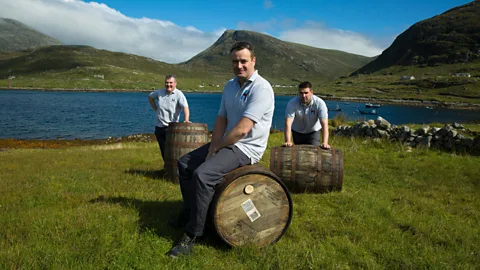 Simon Bohrmann
Simon BohrmannIt'll be around four years until the new distillery starts selling its single malt whisky, The Hearach, but in the meantime, cash flow is being eased by their first product — seaweed-infused gin.
“It will be close to a decade before we start making money. Gin helps the situation. It takes days rather than years to produce,” said managing director Simon Erlanger. Under UK and EU law, whisky must be aged at least three years before it can be sold as such. Meanwhile, the distillery’s first product is Isle of Harris premium gin, flavoured with nine botanical plants such as angelica root, orris root and cassia bark. The defining ingredient, however, is sugar kelp seaweed, harvested by a local diver from the Atlantic.
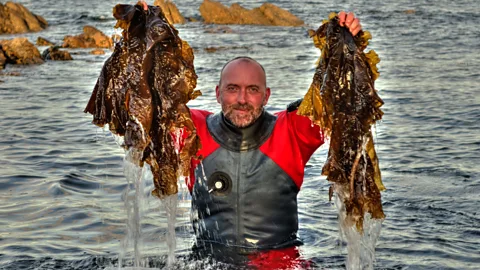 Lewis Mackenzie
Lewis MackenzieAs the UK’s first "social distillery", funded by private investors and by public money from the Scottish government and the local enterprise agency, it is hoped that the Isle of Harris distillery will stop young people leaving the island for jobs elsewhere and spur business creation, particularly in tourism. By producing premium gin to help get the business off the ground, it is also part of a new economic trend seen elsewhere in Europe.
Cheering numbers
"Mother's ruin", better known as gin, has undergone something of a renaissance in Europe and has been reinvented as a premium product over the last eight years. The so-called "gin-aissance" is not only winning over style-conscious younger drinkers but bringing jobs and increased tourism, particularly to remoter areas in, for instance, Finland, Portugal and Spain.
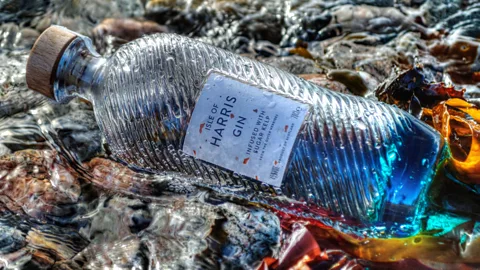 Lewis Mackenzie
Lewis MackenzieAccording to IWSR, a wine and spirits market researcher, total sales of premium gins in 2013-2014 increased in value by 15.5% worldwide, but by an even more substantial 29.8% in Europe, where the market was worth $935m. Between 2015-20 sales of premium gins are expected to grow in volume at a compound annual growth rate of 5.6% worldwide and 6.8% in Europe.
In the UK, the world’s biggest gin exporter, the number of brands has more than doubled since 2010 from 31 to 73 driven by demand for locally-sourced ingredients and natural botanicals which create different flavours, according to a government report.
Cool in Iceland
In Iceland, self-taught distillers Halli and Egill Thorkelsson use homegrown Arctic circle organic barley, wild juniper berries, rhubarb and handpicked native herbs to create premium pot distilled VOR gin. After watching YouTube clips explaining how to make a copper still, the brothers used old dairy-farm milk chillers to build their own stills in Halli’s garage. They opened their Eimverk distillery, just south of Reykjavik, in 2009, only a year after Iceland’s financial meltdown.
 Egill Thorkelsson
Egill Thorkelsson“Although Iceland was very much impacted in 2008 the situation in many ways also paved the way for growth of entrepreneurship overall, and that was and still is the spirit of the day in Iceland,” said Halli. “Icelanders are fishermen. We are used to ups and downs and perhaps sometimes somewhat over-optimistic. You would quickly give up on fishing without a very healthy dose of optimism.”
Their original goal was to create an authentically Icelandic whisky, but when developing their business plan they decided to make gin and aquavit — a spirit distilled from potatoes or other starchy plants — as well. “It was clear to us that it was beneficial to have more than one product. Just whisky was not enough for us to build our own sales and distribution network,” said Halli. “The alternative would have been to sell through someone else’s or existing networks and that was not appealing to us. There is also the fact that it is hard to stop the passion for distilling while the whisky ages.”
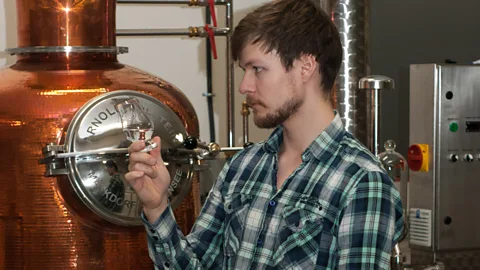 Gudmundur Sigurbjornsson
Gudmundur SigurbjornssonToday, ahead of releasing their Floki whisky, Eimverk already exports gin to Europe, Hong Kong, Australia and the US, and employs six staff full-time.
Cocktail of benefits
Meanwhile in Scotland, where 70% of the UK’s gin is now produced, hopes are high that a newly launched gin trail for tourists can bring money in to local economies — especially in outlying rural areas — something Scotch whisky centres have already achieved. In 2014 alone these whisky visitor centres attracted around 1.5 million tourists who spent almost £50m ($72m) on tours and in the shops and cafes.
In the first three months of 2016, the Isle of Harris distillery welcomed 8,000 visitors — more than four times the local population — and the Harris tweed shop next door has also benefitted from the overflow and has expanded its premises in anticipation of demand.
“The distillery really has created a sense of optimism on the island,” Erlanger said. “They talk of it as the biggest thing to have happened in a generation.”
 RAM ehf
RAM ehfSimilarly, in Iceland, at the Klaustur bar opposite the parliament building in Reykjavik, foreign visitors are increasingly asking specifically for locally distilled drinks, according to Joe Compton, CEO of the bar’s owners, Thorsgardur.
Compton, who moved to the Icelandic capital two years ago after working in finance on Wall Street, said: “Iceland as a whole is very entrepreneurial. If there’s an opportunity, there are a lot of citizens who are ready to step up.” On his travels, he has noted the rise of the gin movement in Catalonia in Spain, as well as in Scotland. As well as locally produced gin, Icelanders have also turned to making schnapps, aquavit and vodka. “The number of small distillers in Iceland is very tangible,” said Compton. “It’s creating economy, industry and jobs.”
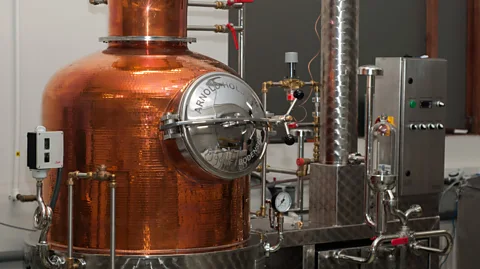 Egill Thorkelsson
Egill ThorkelssonKlaustur serves VOR gin with muddled blackberry and a sprig of rosemary, and the gin and tonics menu launched last summer now sells three times more than the next most popular drink, he said.
While clearly the juniper-based spirit cannot completely refloat Europe, it is certainly making a difference to local economies on the fringes, drop by drop.
